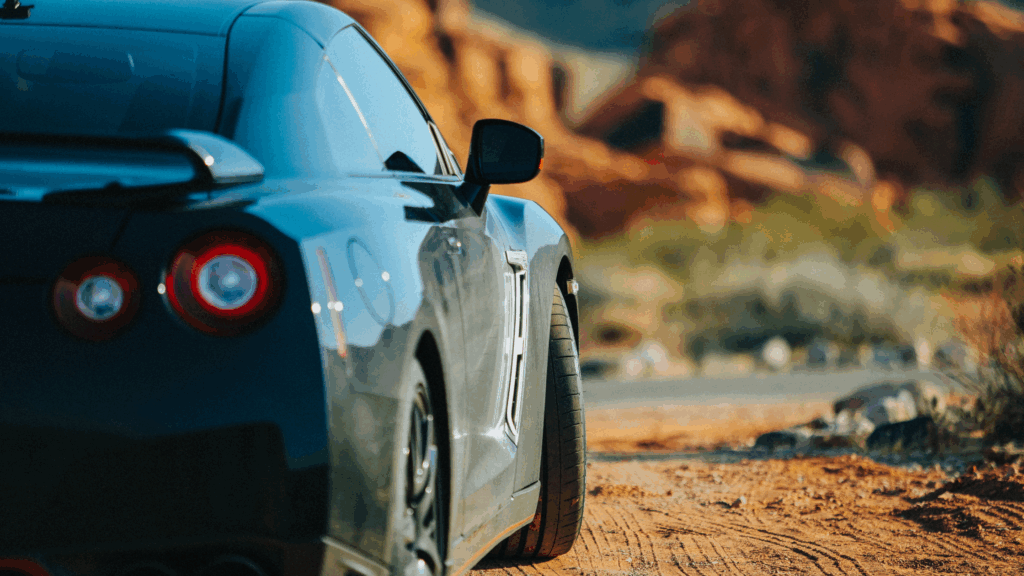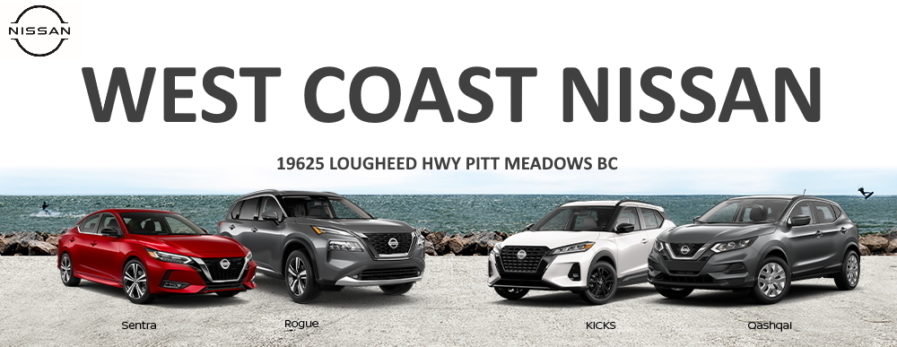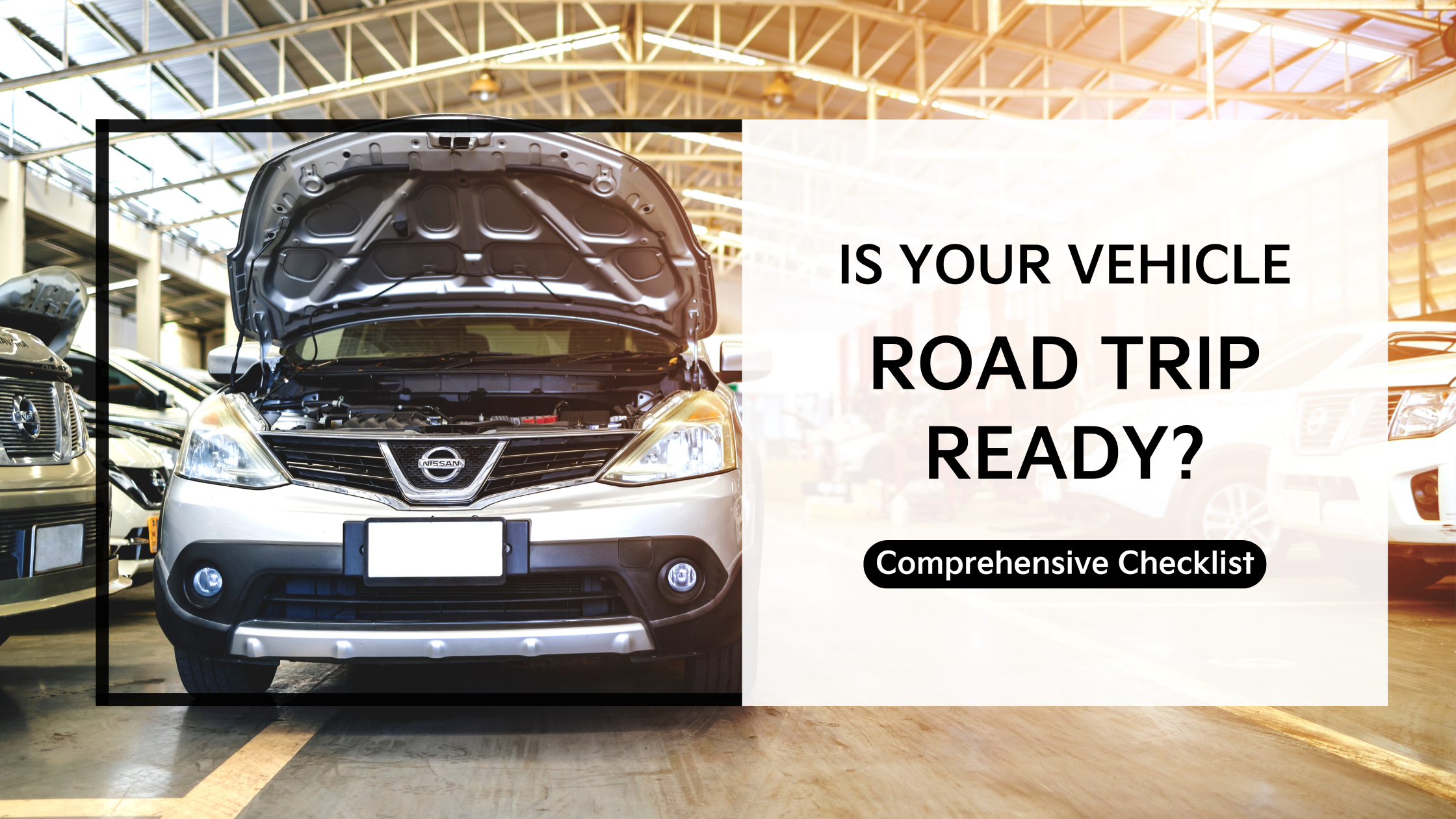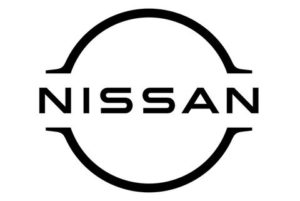Comprehensive vehicle checklist for peace of mind
Planning a summer road trip? Whether you’re heading to the mountains, the lake, or just exploring the open highway, making sure your vehicle is in top shape is one of the most important steps you can take. Long drives put extra stress on your engine, tires, brakes, and cooling system—and the last thing you want is a preventable breakdown far from your destination.
In this guide, we’ll walk you through a detailed, technical checklist to get your vehicle road-trip ready, ensuring a smooth, safe, and worry-free journey.
Engine Oil & Filters
Start with an oil and filter change before long hauls. Engine oil provides up to 40 percent of cooling in stop-and-go and steep grade driving—especially important for turbocharged or long-distance engines. Consider switching to synthetic oil if you’re towing or travelling through high temperatures—it resists thermal breakdown and improves fuel efficiency. Also, replace the engine air filter and cabin air filter. Clean air improves combustion, fuel economy, and interior comfort.
Coolant, Hoses & Belts
Check coolant levels and condition—discoloured or low coolant can indicate a leak or aging fluid that compromises your vehicle’s ability to manage heat. Inspect radiator and heater hoses for cracks, bulges, or soft spots. Rubber degrades over time under heat and pressure. Replace any hose that shows signs of wear before it becomes a problem. Engine drive belts (serpentine belts) should be tight and free of cracks or fraying. Look for a deflection of no more than about 1.3 cm at mid-span between pulleys.
Transmission, Differential & Brake Fluid
Transmission fluid should be changed if overdue—it ensures smooth shifting and protects internal components under strain. For AWD and 4WD vehicles, servicing the front and rear differential fluids is also recommended. Brake fluid absorbs moisture over time and can become less effective. If the fluid is dark or more than two years old, it should be flushed. This helps maintain firm brake pedal feel and safe stopping power, especially with added weight from passengers or cargo.
Tires & Pressure
Tires are your only contact with the road, so they must be in excellent shape.
- Pressure: Check when tires are cold, using the PSI value listed in the owner’s manual or door jamb. Heat from highway driving increases pressure and can cause blowouts if already overinflated.
- Tread depth: The minimum safe tread depth is 4/32” for dry roads, and 6/32” if you’ll face rain or unpredictable weather.
- Age and wear: Even tires with good tread can dry out and crack if they’re more than six years old. If it’s been over 10,000 km since your last tire rotation, do it now to prevent uneven wear.
- Spare tire: Don’t forget to check and inflate the spare. Many drivers overlook this and are caught unprepared in emergencies.
Brakes & Suspension
A full brake inspection is essential before any long trip, especially with increased weight.
- Pads and rotors: Listen for squealing, grinding, or vibrations when braking—these are signs of worn pads or warped rotors.
- Brake fluid and calipers: Inspect for signs of leaks or sticking calipers, which can reduce braking efficiency or cause pulling.
- Suspension: Check shocks, struts, and bushings for wear or leaks. A healthy suspension keeps the ride smooth and stable, particularly on long highway drives or bumpy roads.
Battery & Electrical System
Battery failure is one of the most common causes of roadside breakdowns.
- Age: Batteries older than four years should be tested for capacity. Replace if they show signs of decline.
- Connections: Make sure terminals are clean, tight, and corrosion-free.
- Lights and electronics: Confirm that all interior and exterior lights are functioning. Replace any burnt-out bulbs and ensure your charging system is operating normally.
Air Conditioning & Cooling System
Check that your A/C system is blowing cold. This isn’t just about comfort—your air conditioning helps with defogging and interior air circulation. Inspect cooling fans and ensure your radiator is free from blockages or debris. Overheating can ruin a road trip, especially in slow-moving traffic or uphill terrain.
Wipers, Lights & Essentials
- Windshield wipers: Replace wiper blades if they streak or skip. Fill up on washer fluid—essential during bug season or in dusty conditions.
- Lights: Double-check that brake lights, signals, and headlamps are all working. You need full visibility to see and be seen.
- Emergency kit: Stock your vehicle with jumper cables, a flashlight, basic tools, first-aid supplies, and reflective warning triangles.
Emergency Prep & Documentation
Review your insurance, registration, and driver’s license to ensure they’re current and stored safely in the vehicle. Plan your route with rest stops, fueling stations, and available accommodations. If travelling to remote areas, carry a paper map or ensure your GPS has offline capabilities. Confirm you have access to roadside assistance if something goes wrong.
Final Walk-Around & Road Test
Do one last visual inspection of the vehicle. Check for fluid leaks underneath, ensure all lights function, and verify that tire pressures are correct. A short road test can help reveal any steering vibrations, unusual noises, or braking inconsistencies that might need addressing before departure.
Why It Matters
Taking time to properly inspect and service your vehicle before a road trip isn’t just about safety—it’s about preventing breakdowns, improving fuel economy, and giving yourself the peace of mind to fully enjoy your trip. A smooth-running engine, reliable brakes, fresh fluids, and properly inflated tires all make the difference between a great vacation and an unwanted detour to a repair shop.

Ready for the Adventure?
Our service department is here to help. Whether you need an oil change, brake inspection, fluid flush, or a complete pre-trip inspection, we’ve got you covered.
Click to book your service appointment with West Coast Nissan in Greater Vancouver, Maple Ridge, Pitt Meadows and hit the road with confidence!







